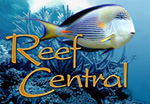I would have loved to read a topic like this 1-1,5 years ago...
At that time I thought that I have nutrient problems in my tank and played a lot with dosing nitrate, urea, ammonia, and phosphate. It is funny that at that time on Reefcentral I have found only 1-2 people talking about phosphate dosing and whoever I talked to thought that I'm completely crazy if I really do so.
Honestly sometimes nitrogen or phosphor dosing seemed to solved issues but - in my case - never for the long run. So I started reading scientific papers about marine biology, and SPS corals.
Here are some findings:
- NO3 dosing distorts the natural nutrient cycle of the tank. NO3 is only a mid-step of the nitrogen cycle indicating the state of the nitrification. If you "naturally" want more NO3 you need more ammonia or urea in the system (That is why more fish helps)
- SPS corals can not use NO3. The way how SPS consumes inorganic nutrient is via Zooxhantella and the preferred form is ammonia or urea. But inorganic nutrient is not enough for SPS, and it only feeds Zooxhantella (it can lead to browning) even though Zoochantella supply the coral with sugar at the end, this sugar do not enough alone. So NO3 will not make SPS much happier.
- NO3 is good food for bacteria. Most tanks run out of nitrogen faster than phosphorus that is why NO3 dosing helps to lower PO4 as long as the primary nutrient export is bacterial like Zoevit, pellet, vodka, etc. But these systems need additional organic carbon dosing as well since the limiting nutrient for bacteria is the carbon and not the nitrogen.
- In nitrogen limited aquarium if you start dosing any inorganic nitrogen of phosphorus there is a high chance that it will lead to cyano. Cyano is a super-survivor so that it adopts faster to new food sources than other bacteria.
- PO4 does not make SPS corals brown. Ammonia + PO4 does. Why is this interesting? At the natural coral reefs PO4 is around 0,01-0,03 - this is in line with the values we try to achieve in a tank - but this PO4 value is never paired with 5-10 NO3 at the coral reef which would be an indicator of an extremely high ammonia load (That is why chasing Redfield makes no sense here!). At the coral reef both ammonia and NO3 levels are very low. NO3 is around 0,01!!
So what did I learn?
I learned that my nutrient problems - or the symptoms that it made - are not real nutrient problems. My Kh-Ca-Mg and even salinity (which is forgotten by lot of people, due to the inaccuracy of the cheap Chinese refractometers) were always rock steady, so my attention went from nutrient to trace elements. Today - thanks to Ehsan Dashti at Triton - we finally see what we have in our water.
The lower the nitrogen level is the more crucial some traces will become. There is very little scientific knowledge available about the role of each trace elements but since I keep them close to NSW and stable I have no issues even though my NO3 and PO4 are non measurable. And you can not say such stupidity like "I dosed "this and that" for 6 month and I did not see any significant difference, so I think "this and that" is not needed for SPS tanks" As far as I consider now the importance of manganese, zinc and iodine are underestimated...






